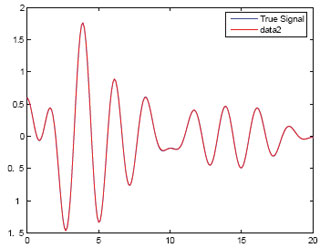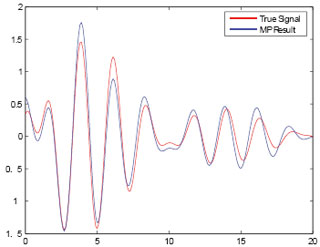Power System Modal Extraction Via Variable Projection Algorithm
Shanshan Liu with adviser Peter W. Sauer
Power system modal information is particularly valuable for power system analysis, control and prediction. But in many cases, the original power system is too complex or the parameters are not known with enough accuracy to produce adequate reduced-order models. Hence, it is desirable to extract the modal information from the system response to some small-signal disturbance. Frequency domain interpolations are computationally efficient but have poor performance when there are closely placed modes, which is the case for power systems. The prony and matrix pencil (MP) methods are good for high signal-to-noise cases. But due to measurement noise and the dynamics of the power system, more accurate results are desired. We will study variable projection methods and compare the results with prony and MP methods.
Figures 24 and 25 show the true signal and the MP results. We expect a variable projection method will give better results for low signal-to-noise ratio (SNR) cases.

